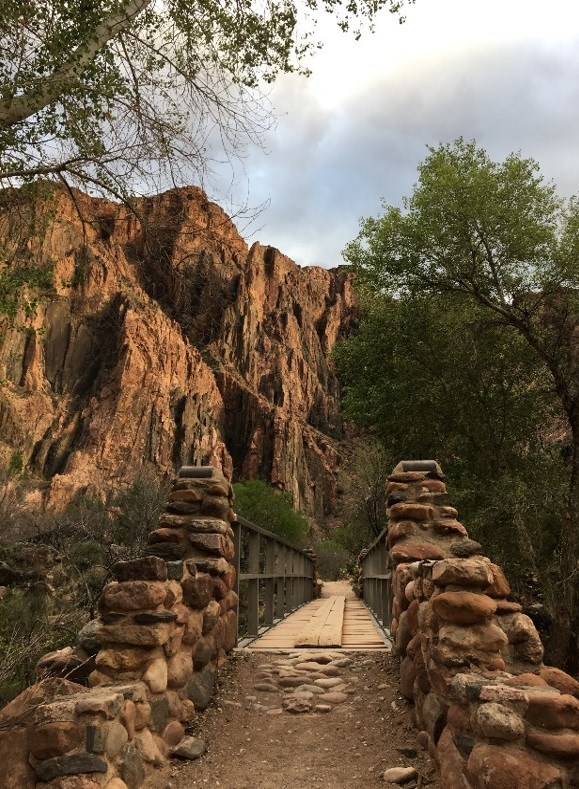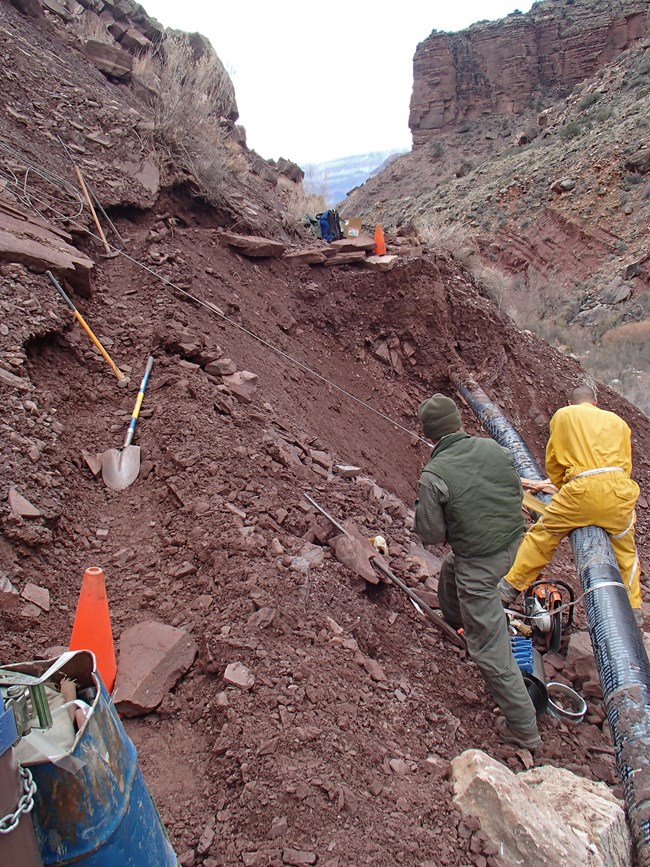Last updated: February 22, 2021
Article
Grand Canyon National Park Features Trans-Canyon Waterline to Celebrate Engineers Week 2021

NPS photo/K. Provenzano
Constructed in 1965-1970, the Trans-Canyon Waterline serves as the backbone of the Grand Canyon water system. This waterline stretches from the current water intake at Roaring Springs on the north side of the canyon, down to Phantom Ranch, and back up to Indian Garden through extremely rugged terrain accessible only by trail or helicopter. It carries about 190 million gallons of drinking water to over 5,000,000 visitors and 2,500 residents at the Inner Canyon Corridor and South Rim developed area.
That’s a lot of water, and time has taken its toll. This aging waterline now faces recurrent breaks, jeopardizing reliable water service to visitors and residents. Replacement of this waterline is a key component in the modernization of Grand Canyon’s water and wastewater infrastructure. But how—and why—does the waterline need to be replaced?
At 50+ years old, the TCWL has exceeded its projected 30-year design life. In its current design, gravity plays a major role in the functioning of the waterline, creating sufficient pressure to flow water to Indian Garden from Roaring Springs. From an elevation 5,200 feet, water travels down the along North Kaibab Trail in the TCWL, through Phantom Ranch. It crosses the Colorado River and reaches its lowest elevation of 2,400 feet (and nearly 700 psi under normal operating conditions) before it ascends the canyon and enters the Indian Garden pump houses at elevation 3,700 feet. From Indian Garden, water is pumped up 3,300 feet in elevation to the South Rim through the borehole section of the waterline.

NPS Photo
The NPS, in response to these recurrent breaks, has developed a new engineering proposal to overcome the challenges of replacing the TCWL. A thorough research process, including utilizing private sector experts to study the variety of options for acquiring water from the river, has resulted in a proposed option which relocates the water intake to the bottom of the canyon at Phantom Ranch. Under this option, natural flow would be restored to Bright Angel Creek from Roaring Springs to Phantom Ranch, where an intake system would draw the from Bright Angel Creek and pump it to Indian Garden. As a part of this proposal, water would continue to be pumped to the South Rim from Indian Garden as it is today. The new water system would require a small treatment facility at Phantom Ranch to provide water to Phantom visitors. Since water would still be needed at Cottonwood Campground, a 2-inch potable waterline approximately 2.3 miles in length, would be installed from Roaring Springs pump house.
Replacement of the TCWL will reduce the vulnerability of the water supply system, provide significantly higher system reliability, and provide consistent quality drinking water. The new pipeline will stretch nearly three miles from Phantom Ranch to Indian Garden and will continue to serve the millions of visitors and thousands of residents who call Grand Canyon home.
The National park service anticipates completing the design of the new system in early 2022 and plans to begin construction by fall of the same year.
Engineers Week (February 21–27, 2021) is dedicated to ensuring a diverse and well-educated future engineering workforce by increasing understanding of and interest in engineering and technology careers. #EngineersWeek

NPS Photo
